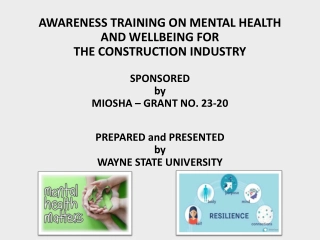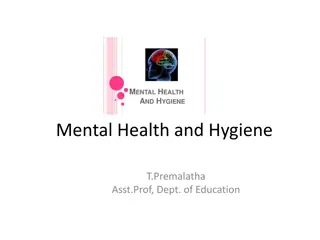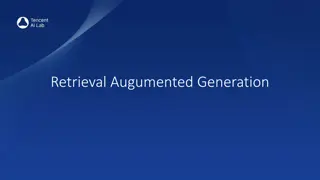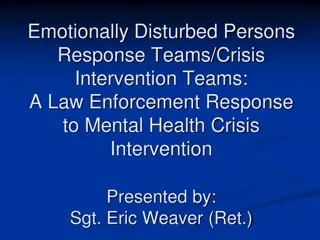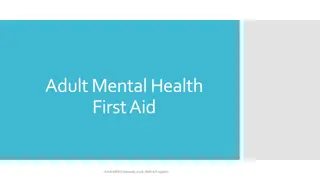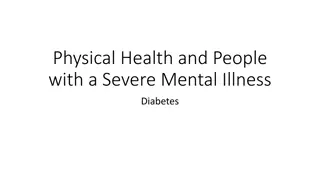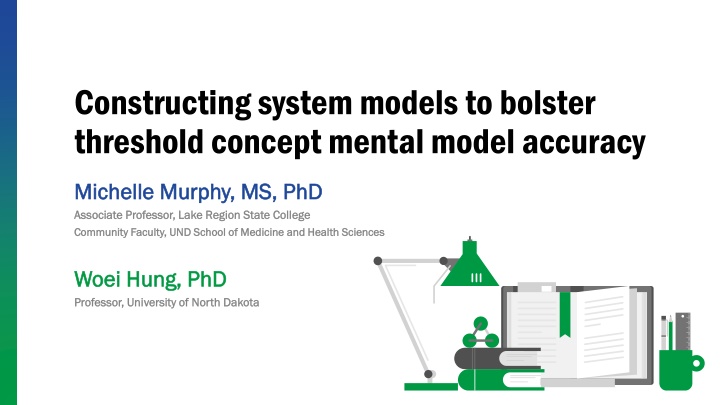
Enhancing Mental Model Accuracy Through System Modeling
Explore how constructing system models can enhance the accuracy of mental models, particularly focusing on threshold concepts essential for deep understanding in various fields. Threshold concepts guide student progress in problem-solving, while systems modeling serves as a cognitive tool to visualize and evaluate mental models, supporting mastery in complex systems thinking.
Download Presentation

Please find below an Image/Link to download the presentation.
The content on the website is provided AS IS for your information and personal use only. It may not be sold, licensed, or shared on other websites without obtaining consent from the author. If you encounter any issues during the download, it is possible that the publisher has removed the file from their server.
You are allowed to download the files provided on this website for personal or commercial use, subject to the condition that they are used lawfully. All files are the property of their respective owners.
The content on the website is provided AS IS for your information and personal use only. It may not be sold, licensed, or shared on other websites without obtaining consent from the author.
E N D
Presentation Transcript
Constructing system models to bolster threshold concept mental model accuracy Michelle Murphy, MS, PhD Michelle Murphy, MS, PhD Associate Professor, Lake Region State College Associate Professor, Lake Region State College Community Faculty, UND School of Medicine and Health Sciences Community Faculty, UND School of Medicine and Health Sciences Woei Hung, PhD Woei Hung, PhD Professor, University of North Dakota Professor, University of North Dakota
Overview RESEARCH FRAMEWORK BRIEF OVERVIEW OF STUDIES SYSTEMS MODELING WITH GOOGLE JAMBOARD 2
Threshold Concepts Threshold concepts Those concepts essential to deep understanding in a field Student progress toward understanding is guided by their mental model of the problem space Mastery is demonstrated when a learner can think both forwards and backwards throughout a functioning system Boersma et al., 2011; Jonassen, 2011 ; Land et al., 2005, 2014; Meyer & Land, 2005; Michael, 2001 THRESHOLD CONCEPTS The Liminal Tunnel Land & Meyer Deep Understanding Superficial Learning Mental Model Formation 4
General Systems Theory Physiological processes are non-linear, dynamic, and complex Thinking in systems supports deep conceptual understanding Capra, 1996; Hung, 2008; Modell et al., 2005; von Bertalanffy, 1969, 1972; Weiss, 1977 Cognitive tools Help students to represent their mental models as systems models Systems modeling, as a cognitive tool, supports visualization of mental models a learner is using to support understanding Gentner & Stevens 1983; Jonassen, 1992, 2003 5
Systems Modeling Systems modeling supports learning by providing a notation system whereby dynamic balancing (negative) and reinforcing (positive) feedback loops may be visualized. Mental model complexity increases as expertise increases Therefore, systems modeling may be used to visualize student understanding and allow for evaluation and correction of misconceptions Dauer et al., 2019; Jeong & Lee, 2012; Mancinetti et al., 2019; Richardson, 1995 6
Conceptual Framework THRESHOLD CONCEPTS The Liminal Tunnel Land & Meyer Systems modeling can be a powerful cognitive tool for visualizing dynamic mental models to support deep understanding of threshold concepts Deep Understanding Superficial Learning Mental Model Formation Systems Modeling Problem Solving / Cognitive Tools Jonassen Systems Thinking Weiss, vonBertalanffy 7
Studies 8
Undergraduate Physiology Undergraduate physiology students demonstrated improved multiple choice question performance after systems modeling, compared with a writing control condition n = 111 The performance gap between the conditions widened over time Systems modeling is an unfamiliar technique to most students As a new technique, students may need time to overcome the initial cognitive load increase UNIT EXAM MEAN SCORES MD = -0.036 Modeling Written 5.500 5.000 MD = 0.209 4.500 4.000 MD = 0.243 3.500 UNEXEN UNEXIM UNEXAB Systems Modeling Mean Diff. Written report Mean SD Mean SD Unit Exam EN 5.164 0.913 5.200 0.797 -0.036 Unit Exam IM 5.155 0.804 4.946 1.026 0.209 Unit Exam AB 4.214 1.062 3.971 1.071 0.243 Final Exam EN 5.480 0.747 5.543 0.701 -0.063 Final Exam IM 5.268 0.894 5.189 0.877 0.079 Final Exam AB 4.306 1.218 4.000 1.219 0.306 9
Graduate Physiology Part 1 Graduate physician assistant physiology students ranked systems modeling as the top beneficial strategy for learning physiology Of fifteen ranked strategies, n = 64 They also ranked it in second place for benefit in retaining physiology content knowledge into clinical studies Rank the following techniques in order from most helpful (1) to least helpful (15) Didactic M Didactic SD Clinical M Clinical SD t, df = 52 Constructing systems diagram drawings 4.53 3.06 4.33 2.81 0.63 Explaining a concept to myself in my own words 4.83 3.09 4.02 2.58 2.207* Working with a study group or partner to ask and answer "why" questions 5.59 3.88 4.98 3.22 1.492 Pausing during study to form a mental image of the content 5.85 3.04 6.02 3.19 -0.341 Listening to lecture recordings more than once 6.19 4.09 7.3 4.18 -2.491* <.05 *; <.01**; <.001*** 10
Graduate Physiology Graduate physician assistant physiology students demonstrated increasing systems understanding after peer group systems modeling Increase process terms over structure terms pre-instruction Increase descriptions of cell-cell communication after instruction 1: Pre % 1: Post % 2: Pre % 2: Post % Clin % Total injuri 19 29 21 16 17 103 infect 13 16 14 14 13 70 homeostasi 14 9 7 10 10 50 cell 12 3 9 16 10 49 damag 10 3 15 10 10 47 tissu 8 5 9 13 9 44 respon 12 8 9 5 10 43 foreign 4 0 9 10 13 35 stress 3 21 5 1 3 32 disea 6 5 3 6 6 26 a tissue, cell or organ is no longer in homeostasis, which is usually triggered by some type of trauma/outside source of injury, stress, chemical/ion imbalance, or infection/pathogens stress, damage, infection occurs, cytokines Session 1, Post systems modeling injury of some form occurs, signals release of histamines, cortisol, constant state of stress in body, state of homeostasis not present Environmental or internal stressors cause cytokines and complement cascade to vasodilate, increased vascular permeability, bring about pain, and secrete chemicals inducing higher flow of rbcs [red blood cells] and wbcs [white blood cells] 11
Creating Systems Models: Blood Pressure 12
Google Jamboard https://bit.ly/3lyqlp8 https://jamboard.google.com/d/14HYbXkKeo GdHgWVGK2vlufkgyYZ6VaquOzCiZPdCh8A/vi ewer 13
Thank you! michelle.murphy@lrsc.edu woei.hung@und.edu 14

